Are your ads underperforming? Wondering if there’s a better way to engage prospects?
In this article, you’ll discover how to use Instant Experiences as a more immersive alternative to your existing campaigns.
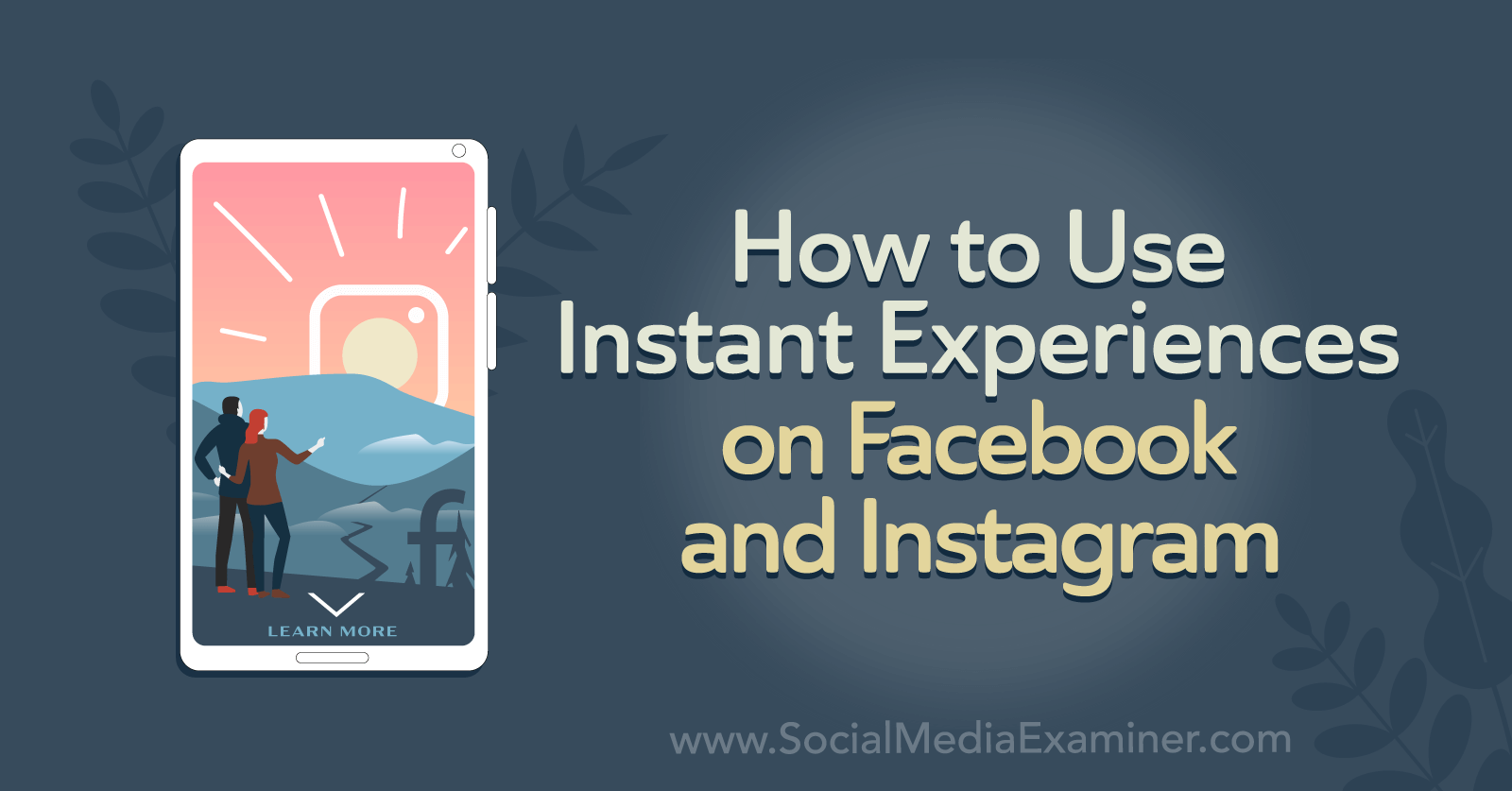
What Is a Facebook Instant Experience?
Instant Experience is a type of mobile ad from Meta, available for both Instagram and Facebook.
Most mobile ads on these social networks are very simple: Users see an image and a slogan, and if they're interested, they click a link. That link will often take them to an online shop, a newsletter sign-up form, or a Facebook shop catalog.

Instant Experience adds an extra step. When users tap on an instant experience ad, it opens a full-screen piece of content.
Users can scroll through the instant experience to view images, videos, text, and even augmented reality (AR) or interactive elements. And the ad may (but not necessarily) include a link to the brand's online shop or website.
Instant experiences are designed to be more immersive than conventional mobile ads. You can think of an instant experience as an online article, a sales presentation, an information leaflet, or even a brand newsletter. The key difference is that the whole experience takes place on the Facebook and Instagram mobile apps, with access to their analytics and ad reach.
If you're thinking that all of this sounds a bit familiar, that's because Facebook previously offered a very similar ad type: Facebook Canvas. But since Canvas first launched in 2016, the social network has added a host of new features including instant templates, AR compatibility, Shop elements, and cross-posting to Instagram.
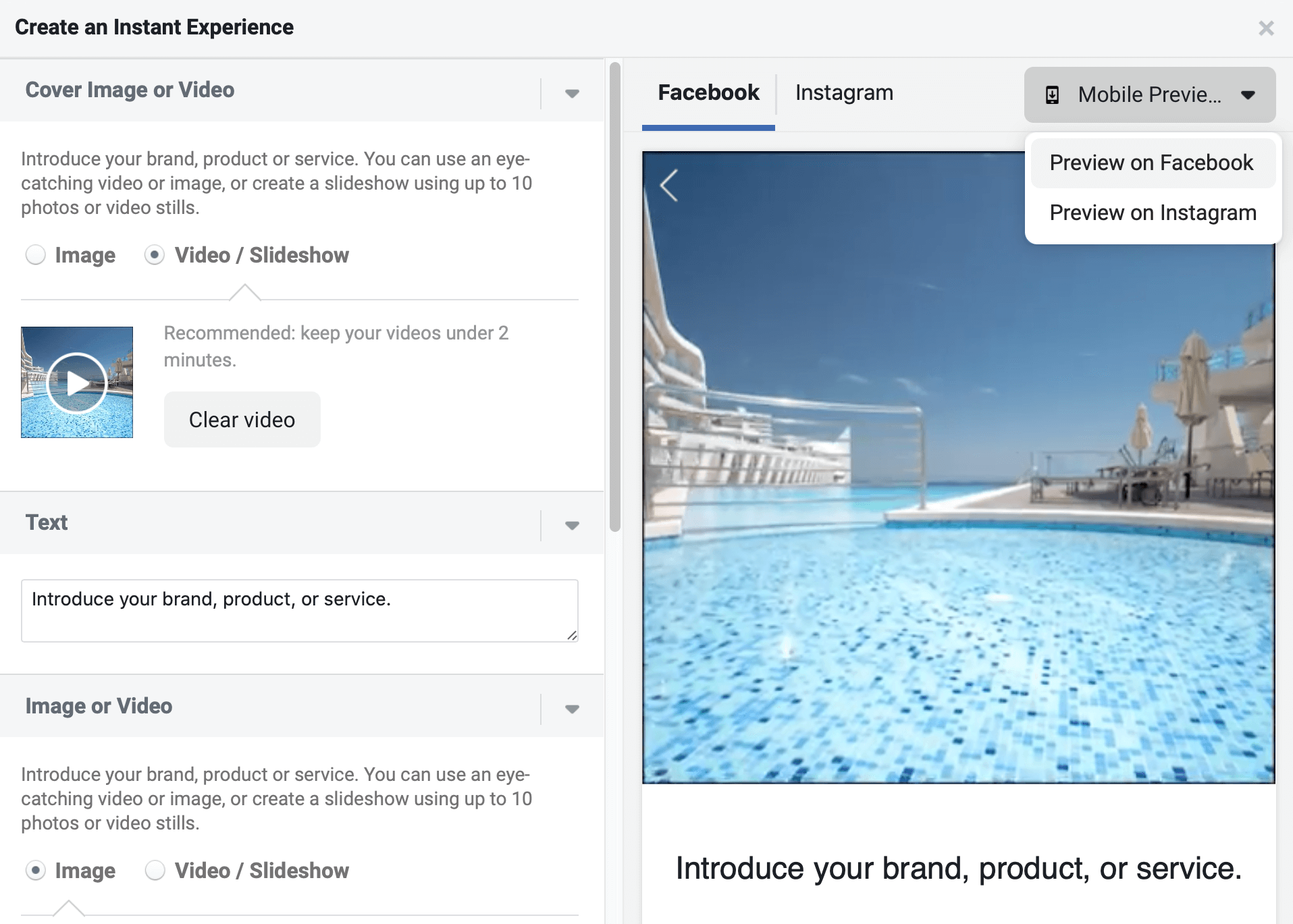
Those new features have only reinforced the key benefits of instant experiences:
- Creating an instant impression of community and brand values
- Sharing more information with viewers who are interested in your brand
- Increasing dwell time and brand exposure through your ads
- Connecting users to mobile-optimized content with faster load times (up to 15 times faster than standard mobile websites, according to Facebook)
The benefits of Instant Experience ads are a clue to how you should be using them. Someone who sees an ad for your brand for the first time is unlikely to spend minutes scrolling through an instant experience.
However, potential customers who are already considering your brand or loyal customers who want to know about new products are ideal targets for an Instant Experience campaign.
Understanding Instant Experience Campaign Objective and Creative Considerations
You can create instant experiences in Facebook Ads Manager like any other ad. And just like any ad, you'll need to start by choosing a campaign objective.
It's important to note that Instant Experience is only available for these campaign objectives:
- Brand awareness
- Reach
- Traffic
- Engagement
- App installs
- Video views
- Catalog sales
- Store traffic

The campaign objective also affects which templates are available to choose from. For example, if you pick brand awareness, you won't have access to the Instant Lookbook template. If you choose app installs, then you'll have to design a custom instant experience without any templates at all.
Get World-Class Marketing Training — All Year Long!
Are you facing doubt, uncertainty, or overwhelm? The Social Media Marketing Society can help.
Each month, you’ll receive training from trusted marketing experts, covering everything from AI to organic social marketing. When you join, you’ll also get immediate access to:
- A library of 100+ marketing trainings
- A community of like-minded marketers
- Monthly online community meetups
- Relevant news and trends updates
Facebook also offers a range of different ad placements depending on which Instant Experience format you choose. You can hook readers with a single image, a video, a carousel, or a collection, which they tap to view the full experience. However, each “hook” works with different placements.
It's worth considering these different formats and placements at the beginning of your campaign so you don't run into problems later.
- Instant experiences with a single image or video as the tap-to-click stimulus can be placed in the news feed, Marketplace, group feeds, Stories, and search results, as well as the Explore tab, main feed, and Stories on Instagram.
- Instant experiences with a carousel are shown in the news feed, Marketplace, Stories, and search results—but not group feeds. They can also show up on the Instagram Explore tab and main feed.
- Instant experiences with a collection are shown in the news feed, Marketplace, and on the Instagram Explore tab and main feed.
Here's the good news: Because Instant Experience works seamlessly across Facebook and Instagram for all formats, the ad specs are always the same. You don't need to learn different recommendations for content on Facebook versus Instagram.
In the example below, the same ad creative is used across Instagram and Facebook.

Here's a summary of the content specs you need to know for Instant Experience:
- You can feature up to 20 images and unlimited videos (as long as the total runtime is under 2 minutes).
- You can include multiple blocks of text of up to 500 words each. Basic HTML formatting is available.
- Each instant experience must include at least one action button.
- Still images should be 1080 x 1920 pixels in .png or .jpg format.
- Videos should be at least 720p in .mp4 or .mov format.
- The tilt-to-pan feature is available for images and videos up to 5400 pixels wide. Facebook recommends sticking to 3240 pixels or below, though.
If you're looking for more guidance, read Facebook's detailed specs and recommendations.
Now that you understand the basics of instant experiences, here's how to set up a campaign.
#1: Set Up a New Campaign in Facebook Ads Manager
Creating an Instant Experience ad starts just like any other ad on Facebook. You go to Ads Manager, select your campaign objective, set your budget and timeframe, and define an audience to target.

You can also set up tracking. Because an instant experience works like a mobile web page, you can use the Facebook pixel to track user activity in the experience.
It's on the next page of Ads Manager that your creativity kicks in.
When you scroll down to Ad Setup, the first thing you'll need to pick is a format. Is the hook for your instant experience a single image, video, carousel, or collection?
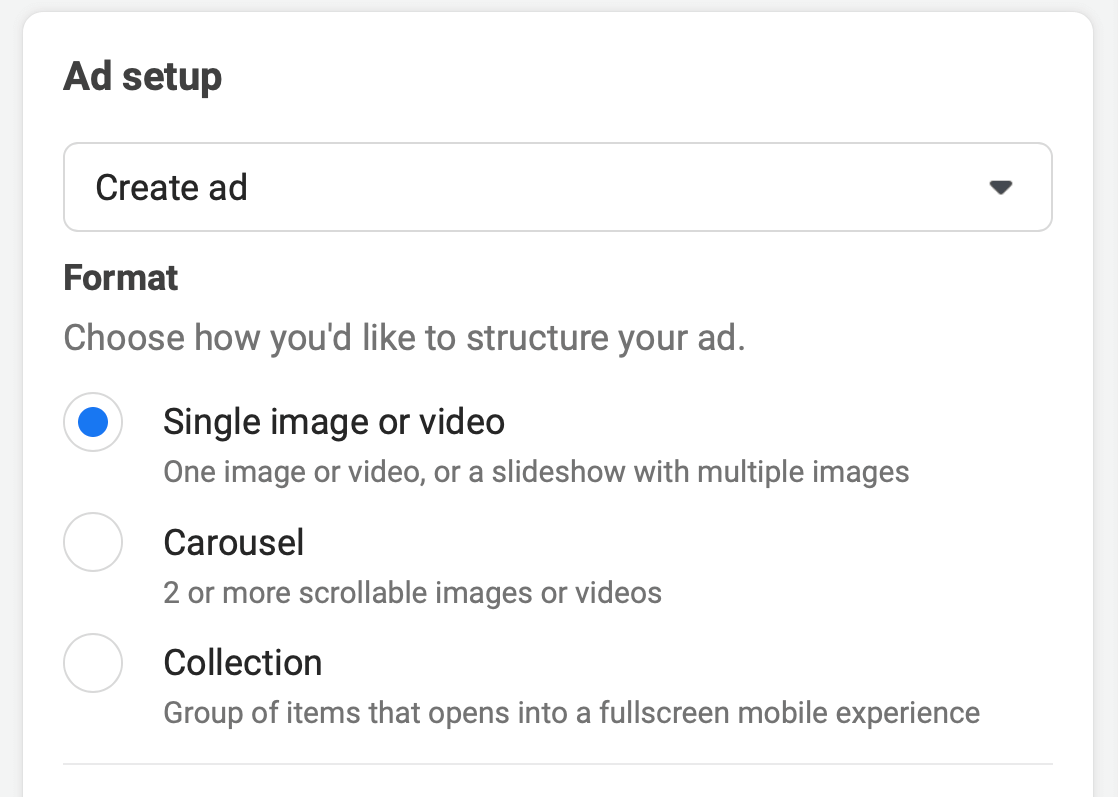
Next, immediately below the ad format, you'll see the Full-Screen Mobile Experience section. Check the Add an Instant Experience box.

Discover Proven Marketing Strategies and Tips
Want to go even deeper with your marketing? Check out the Social Media Marketing Podcast! Publishing weekly since 2012, the Social Media Marketing Podcast helps you navigate the constantly changing marketing jungle, with expert interviews from marketing pros.
But don’t let the name fool you. This show is about a lot more than just social media marketing. With over 600 episodes and millions of downloads each year, this show has been a trusted source for marketers for well over a decade.
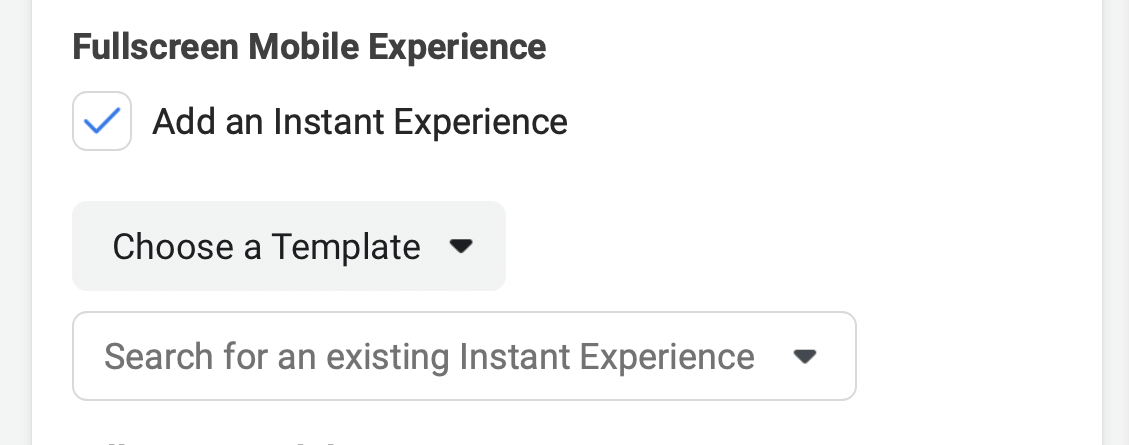
At this point, you can choose whether to use an existing experience or create one from scratch. This option will save you a lot of time in the future; for example, you could experiment with using different ad formats to publish the same instant experience.
But for now, we'll create something new.
#2: Choose an Instant Experience Template
Click Choose a Template to see the list of options for your campaign objective.
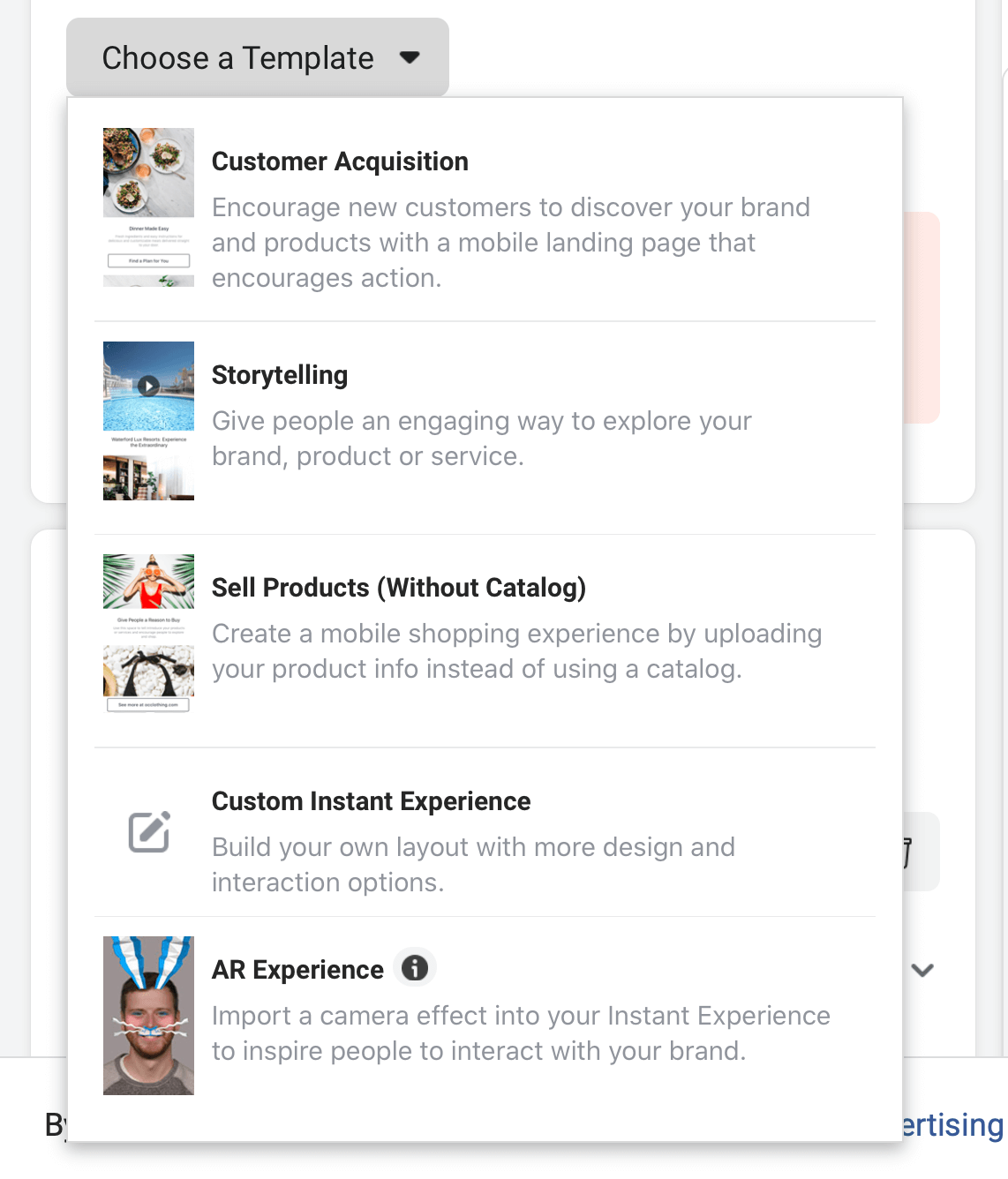
Here's a full list of templates:
- Customer acquisition: This template is the most similar to a classic sales landing page. It's aimed at new customers or old customers discovering new products.
- Storytelling: Choose this option if you want to create something like a newsletter or informational mailer.
- Storefront: This template links up with your Facebook store catalog so you can add products automatically.
- Sell products (without catalog): This option shows up if you don't have a store catalog on Facebook already. You can manually upload product information to create a store effect.
- Lookbook: This template also helps you show off your products, but instead of displaying them as a shopping grid, products are shown in context. You could share photos, videos, or even AR elements of your products in use.
- Custom instant experience: Choose this option if you're used to creating instant experiences or you want to try something that doesn't fit into any of the basic categories.
- AR experience: Facebook has linked up with Spark AR to offer camera effects. You can create unique effects and then apply them to your instant experiences as interactive elements. Currently, this feature only works with video ads, not static images—but watch out for more updates.
Pro Tip: Earlier versions of Canvas and Instant Experience included Instant Forms. This option is no longer available, but if you select Lead Generation as your campaign objective, you can still create instant forms in Ads Manager. They're just not part of the Instant Experience ad format.
#3: Add Media to Your Instant Experience
The different templates for instant experiences offer different layouts.
For example, the Customer Acquisition template has space for a cover image, an image carousel, three blocks of text, and two buttons. The Storytelling template, on the other hand, has only one button but includes more space for images and narrative videos.
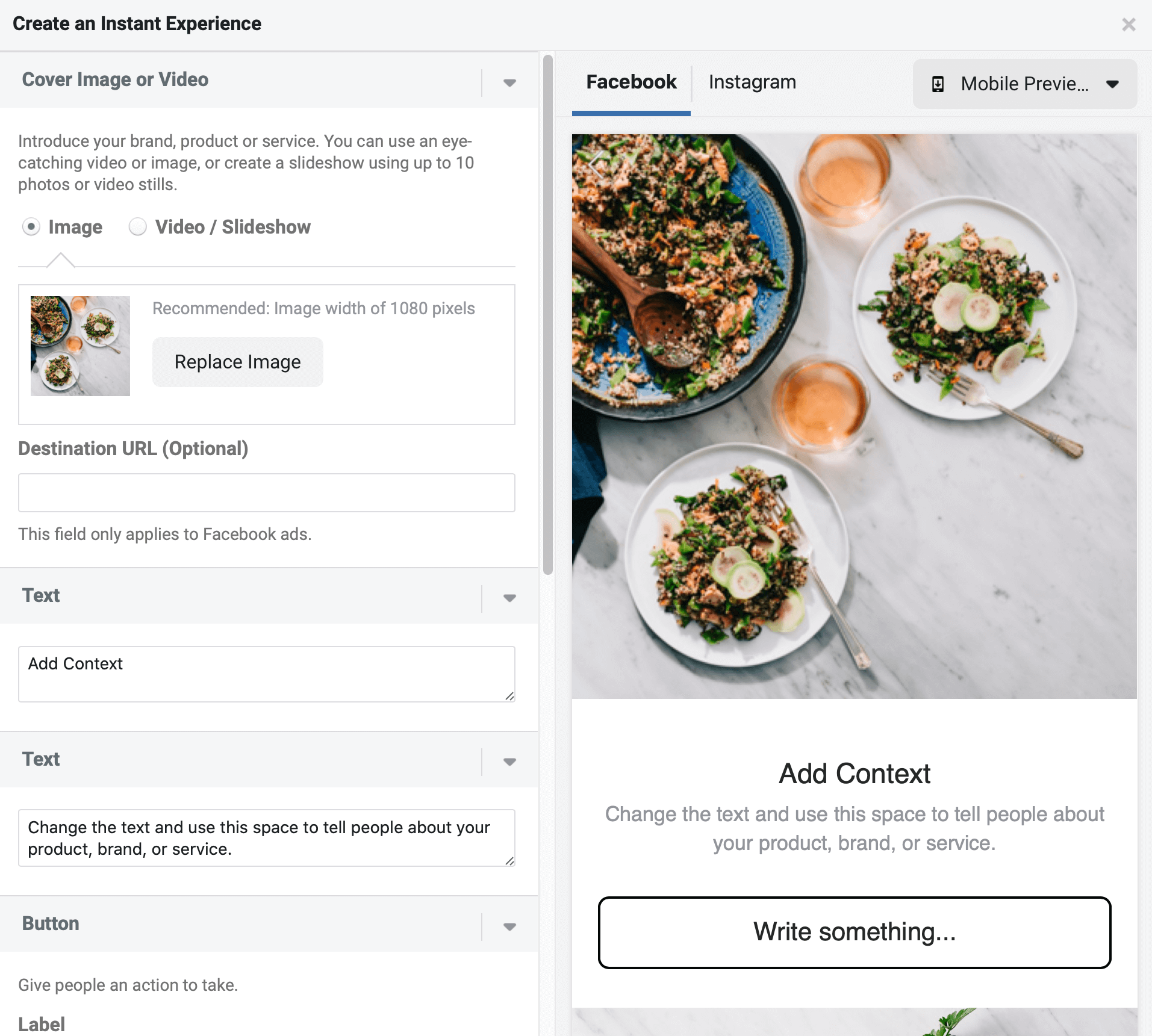
And if you can't find a template that's right for you, you can always select Custom to design your own layout.
The media assets that you need will depend on the template you've chosen (or created). However, here are a few things to think about:
- Every template includes at least some text. Don't skimp on these elements. You can write up to 500 words in each text space. Any copywriter will tell you that 5 words can be just as impactful as 500—but they have to be the right words.
- If you use multiple images and videos throughout the template, make sure they have a consistent production quality, tone, and style. If users scroll through the instant experience and the media style keeps changing, your brand message will be weakened.
- Don't forget to include links in images. If users see something they like, they'll want to tap through to your website immediately.
- Don't ignore the buttons! Yes, these are the smallest elements in an Instant Experience but they're also your best chance to convert. Use different colors, formatting, and copywriting so users can't resist tapping.
- If you include interactive elements (such as tilt-to-pan images or AR effects), test them thoroughly. There's nothing more frustrating than a tantalizing ad that doesn't actually work.
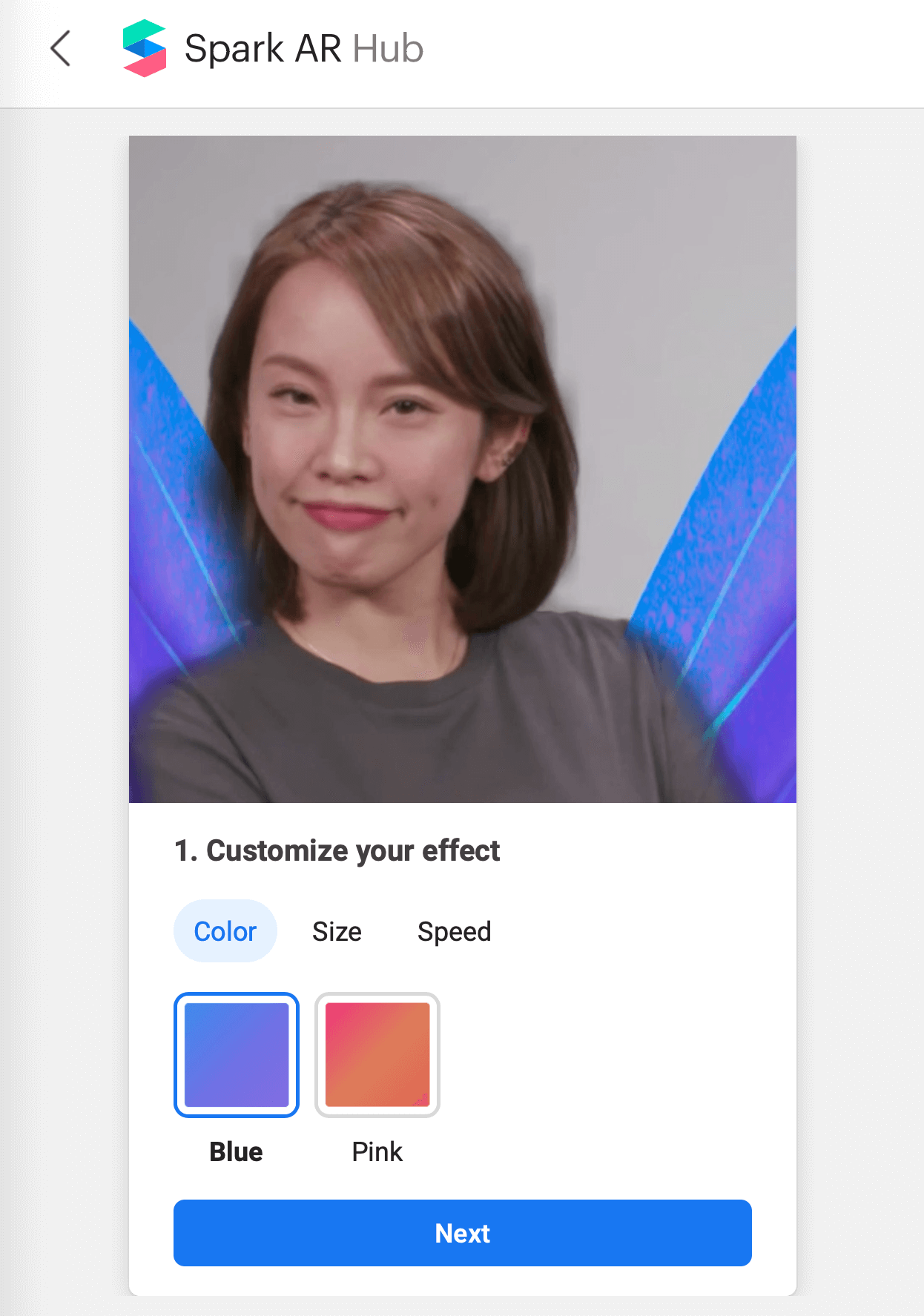
Best Practices for Facebook Instant Experience Ads
The rest of the creative decisions are up to you. However, Facebook itself does have a few pointers based on case studies of their ad campaign.
- The most engaging instant experiences use between five and seven different components, including a mix of static images and video.
- The cover image is the most important part of your instant experience. Choose something that will make people want to tap through and see more.
- To get the most conversions, include an image link or button in every element of the instant experience.
- Users prefer instant experiences where they can interact with the content, instead of just passively reading or watching.
- Tilt-to-pan images aren't automatically labeled with instructions, so if you want to maximize engagement, make sure you mention tilt-to-pan in your caption or a text block.
- Always include captions on videos. Many of your users will be watching with the sound off or may have a hearing impairment.
Pro Tip: If you really want to draw users in, you can link instant experiences together. Simply select another instant experience as the destination URL for one of the links so users tap through and carry on reading.
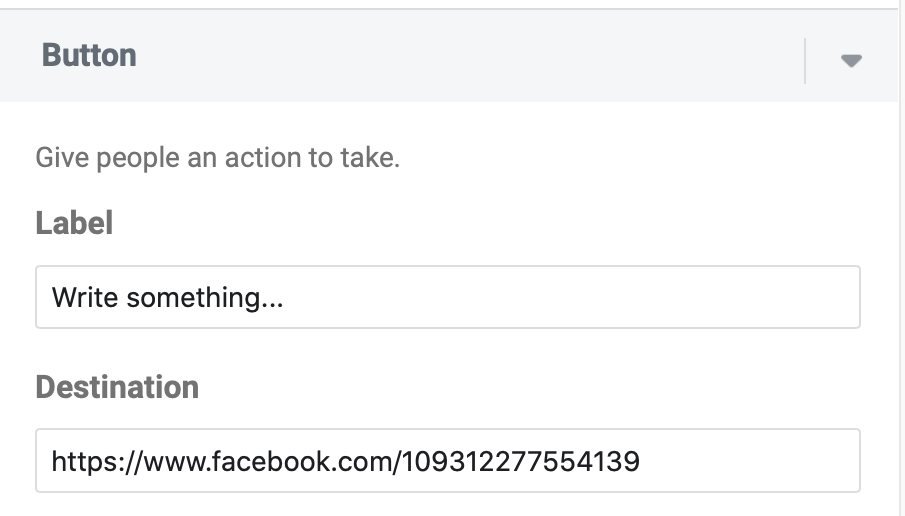
#4: Analyze Instant Experience Ads' Performance
Once your instant experience is live and pulling in viewers, it's time to look at the metrics. As always with Facebook ads, this step is essential. You'll need analytics to see what worked and refine your strategy.
Facebook tracks five key metrics for instant experiences:
- Link clicks: how many people tap links within Facebook. This includes taps to view an instant experience or visit your store catalog on Facebook.
- Outbound clicks: how many people tap the buttons or image links that lead to sites off Facebook.
- View time: how long people spend in the instant experience. If you link multiple instant experiences together, you'll get the total view time across all of them.
- View percentage: how much of the instant experience is viewed. Note that this is different from view time. For example, someone might spend a few minutes watching the first video in an experience but not scroll any further. This metric only applies to one instant experience at a time, even if you linked other experiences together.
- Landing page views: how many people tapped the ad and successfully loaded the instant experience. This metric helps you separate views from the overall Link Clicks metric. If the numbers are very low, it could also point to loading or media issues with your instant experience.
Facebook will also show you metrics for the individual components within an instant experience; however, these metrics are only estimated. They're not a completely reliable guide.
Conclusion
Instant experiences are an opportunity to put more content, creativity, and community into your Facebook and Instagram ads and provide a more immersive experience for your target audience.
Get More Advice on Facebook Ads
- Choose the right Facebook ads bidding strategy.
- Pick the best Facebook ad type for your target audience.
- Track 10 important Facebook ad metrics.
Stay Up-to-Date: Get New Marketing Articles Delivered to You!
Don't miss out on upcoming social media marketing insights and strategies! Sign up to receive notifications when we publish new articles on Social Media Examiner. Our expertly crafted content will help you stay ahead of the curve and drive results for your business. Click the link below to sign up now and receive our annual report!
Attention Agency Owners, Brand Marketers, and Consultants

Introducing the Marketing Agency Show–our newest podcast designed to explore the struggles of agency marketers.
Join show host and agency owner, Brooke Sellas, as she interviews agency marketers and digs deep into their biggest challenges. Explore topics like navigating rough economic times, leveraging AI, service diversification, client acquisition, and much more.
Just pull up your favorite podcast app, search for Marketing Agency Show and start listening. Or click the button below for more information.

